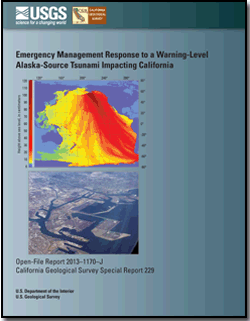 Introduction and Purpose Introduction and Purpose
This chapter is directed towards two audiences: Firstly, it targets nonemergency management readers, providing them with insight on the process and challenges facing emergency managers in responding to tsunami Warning, particularly given this “short fuse” scenario. It is called “short fuse” because there is only a 5.5-hour window following the earthquake before arrival of the tsunami within which to evaluate the threat, disseminate alert and warning messages, and respond. This action initiates a period when crisis communication is of paramount importance. An additional dynamic that is important to note is that within 15 minutes of the earthquake, the National Oceanic and Atmospheric Administration (NOAA) and the National Weather Service (NWS) will issue alert bulletins for the entire Pacific Coast. This is one-half the time actually presented by recent tsunamis from Japan, Chile, and Samoa. Second, the chapter provides emergency managers at all levels with insights into key considerations they may need to address in order to augment their existing plans and effectively respond to tsunami events.
We look at emergency management response to the tsunami threat from three perspectives:
-
“Top Down” (Threat analysis and Alert/Warning information from the Federal agency charged with Alert and Warning)
-
“Bottom Up” (Emergency management’s Incident Command approach to responding to emergencies and disasters based on the needs of impacted local jurisdictions)
“Across Time” (From the initiating earthquake event through emergency response)
We focus on these questions:
-
What are the government roles, relationships, and products that support Tsunami Alert and Warning dissemination? (Emergency Planning and Preparedness.)
-
What roles, relationships, and products support emergency management response to Tsunami Warning and impact? (Engendering prudent public safety response.)
-
What are the key emergency management activities, considerations, and challenges brought out by the SAFRR tsunami scenario? (Real emergencies)
-
How do these activities, considerations, and challenges play out as the tsunami event unfolds across the “life” of the event? (Lessons)
|
First posted September 3, 2013
This report is presented in Portable Document Format (PDF); the latest version of Adobe Reader or similar software is required to view it. Download the latest version of Adobe Reader, free of charge. |